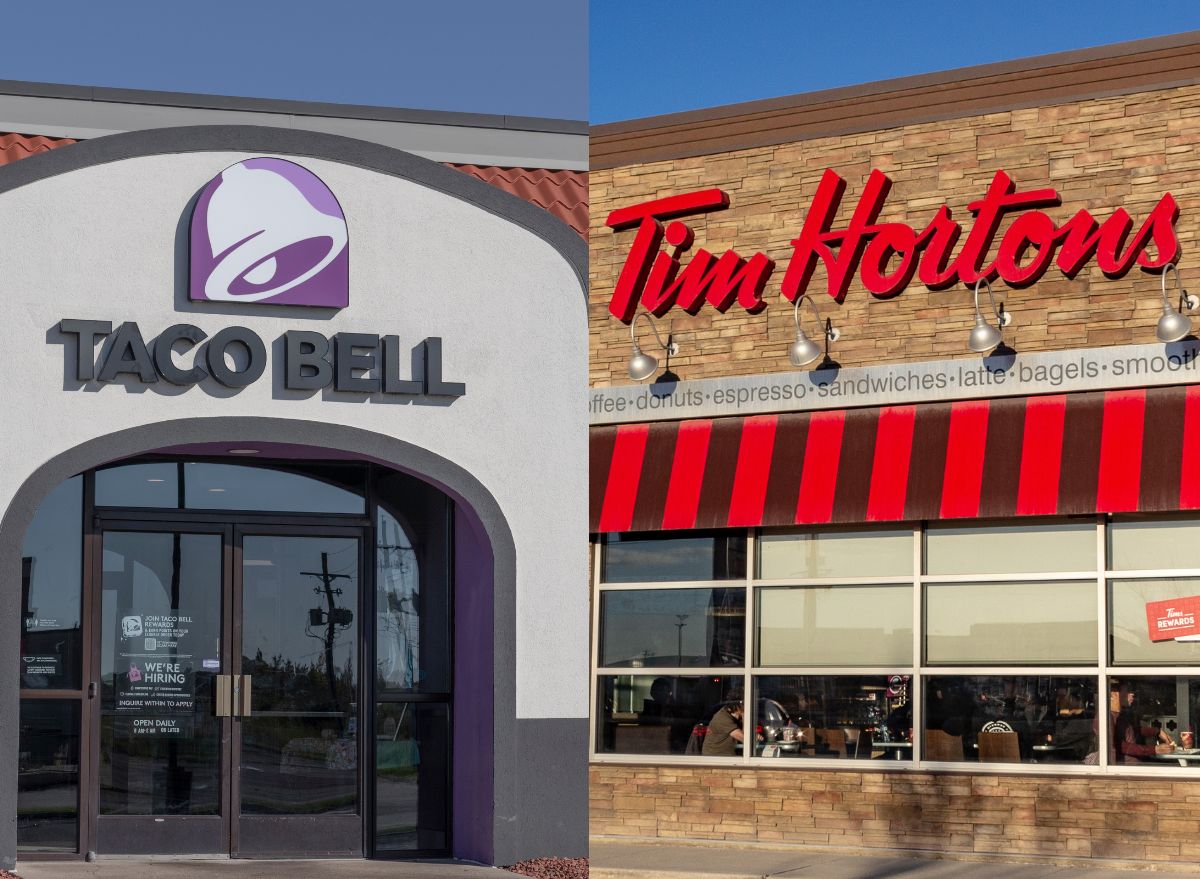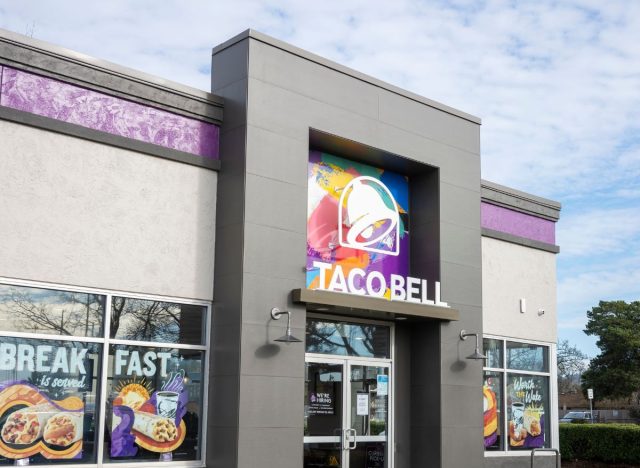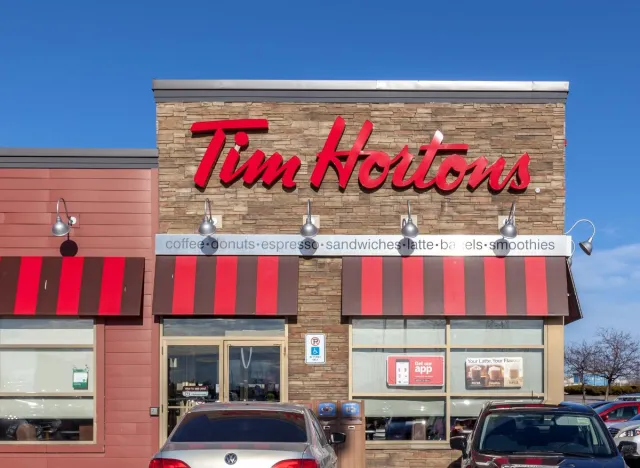Taco Bell & Tim Hortons Are Skyrocketing In Popularity—Here's Why

This year has been a remarkably tough time for the restaurant industry as major chains have contended with sales declines, closures, and even bankruptcies. But while many of their rival brands struggle, two fast-food chains are currently skyrocketing in popularity: Taco Bell and Tim Hortons.
Yum! Brands and Restaurant Brands International (RBI), the parent companies of Taco Bell and Tim Hortons, respectively, released their latest quarterly earnings reports on Nov. 5—and the results were mixed.
Both companies reported notable sales declines for most of their big-name chains. Burger King, Popeyes, and Firehouse Subs—which are under the RBI umbrella alongside Tim Hortons—all saw drops in systemwide sales and same-store sales last quarter (ranging from 0.6% to 4.8%). Meanwhile, the Yum-owned chains KFC and Pizza Hut both saw a 4% decline in their same-store sales last quarter.

These unfavorable results were in stark contrast to how Taco Bell and Tim Hortons performed during the period. Taco Bell grew its systemwide sales by 5% and its same-store sales by 4%, while Tim Hortons grew its systemwide sales by 2.8% and its same-store sales by 2.3%.
During earnings calls to discuss their quarterly results this week, Yum and RBI offered some intriguing insight into why the two chains are flourishing right now. In Taco Bell's case, executives cited the chain's strong "value perception," engagement with fans, and menu innovations that build buzz around the brand.
"Taco Bell's competitive advantages in innovation, value leadership at compelling price points, and strong consumer connection are clear reasons why the brand remains a category of one when it comes to winning with consumers in any economic environment," Yum CEO David Gibbs said during the Nov. 5 call.
Meanwhile, RBI executives believe Tim Hortons' strong performance was due to its focus on serving affordable, accessible, and consistently good food.

"An excellent team continued to demonstrate the power of having high-quality food and beverages at a great everyday price, excellent restaurant-level execution, unrivaled convenience, and dedicated restaurant owners," CEO Josh Kobza said.
According to Kobza, the donut and coffee chain is the largest contributor to RBI's adjusted operating income (AOI)—a company's income after taking away operating expenses. He noted that Tims has gotten a boost from rising breakfast sandwich and wrap sales. Plus, he said the new flatbread pizzas that launched in Canada earlier this year have driven more customers to visit the chain during "historically slower" times of day and resulted in higher checks.
"Our ongoing improvements and operations, coupled with our marketing initiatives, remain a consistent driver of traffic growth, and I'm proud to see the dedication of our Tims team and restaurant owners driving positive sales growth and industry outperformance," Kobza said.
Both companies have initiatives underway aimed at reviving their other restaurant brands. At RBI, for example, Firehouse Subs recently brought back its popular Hot Sauce Bar, Popeyes is working to improve its value and restaurant operations, and Burger King is currently in the midst of a $400 million "Reclaim the Flame" program to enhance its brand, menu, and restaurants.
At Yum, Gibbs said that Pizza Hut's new Chief Brand Officer Kalen Thornton is working on "repositioning the brand over the long term." Meanwhile, the KFC team plans to focus on delivering better value to customers and build on the success of its rewards program, which Gibbs said has helped grow digital sales more than 20% from last year.
But for the time being, the latest sales data indicates that Taco Bell and Tim Hortons are the chains to watch at Yum and RBI.









